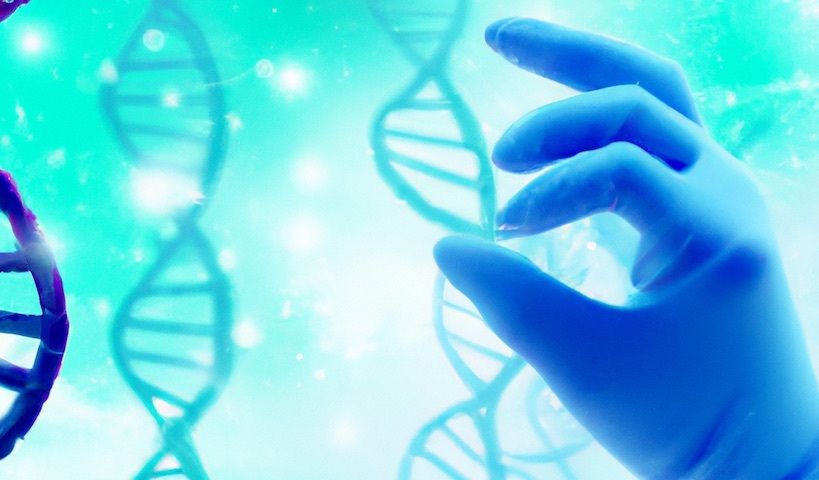What Does DNA Stand For? | DNA Explained 2024

Expert Reviewed by Dr. Brandon Colby MD
DNA: The Blueprint of Life
DNA, often dubbed the “blueprint of life,” is like the universe’s most intricate coding system. Imagine a spiral staircase, known as a double helix, where each step is made of pairs of four unique, quirky characters: adenine (the A-lister), thymine (the top-notch T), cytosine (the cool C), and guanine (the great G). Together, they spell out the secrets of life in a language called deoxyribonucleic acid.
This isn’t just any old script; it’s the story of you, me, and every living thing around us. From the color of your eyes to your ability (or inability) to dance, DNA holds the juicy gossip about what makes us tick. Dive into its twists and turns, and you’re in for a wild, genetic roller coaster ride!
Double Helix Structure
The iconic double helix structure of DNA was discovered by James Watson and Francis Crick in 1953[1]. This structure consists of two strands of nucleotides coiled around each other, resembling a twisted ladder. Each nucleotide is made up of a phosphate group, a sugar molecule, and one of four nitrogenous bases: adenine (A), thymine (T), cytosine (C), or guanine (G).
Base Pairing
The nitrogenous bases on one strand form hydrogen bonds with the bases on the opposite strand. Adenine always pairs with thymine, and cytosine always pairs with guanine[2]. This specific base pairing is crucial for the replication and repair of DNA.
DNA Replication
Before a cell divides, its DNA must be replicated to ensure that both daughter cells receive a complete set of genetic instructions[3]. During replication, the two strands of the DNA molecule separate, and each strand serves as a template for the synthesis of a new complementary strand.
DNA’s Role in Protein Synthesis
The sequence of bases in a DNA molecule codes for the sequence of amino acids in a protein[4]. This process involves transcription and translation, where the RNA molecule directs the assembly of amino acids into a protein.
DNA Repair Mechanisms
DNA is constantly exposed to damaging agents, both internal and external. Cells have evolved intricate repair mechanisms to detect and correct damaged DNA[5], ensuring the integrity of the genetic code.
DNA and Evolution
Changes or mutations in DNA sequences can lead to variations in organisms. Over time, these variations can accumulate, leading to the evolution of new species[6]. DNA sequences can also be used to trace evolutionary relationships among organisms.
DNA Technology
Advancements in DNA technology have revolutionized various fields, from medicine to forensics[7]. Techniques like DNA sequencing, gene editing, and DNA fingerprinting have had profound impacts on our understanding of genetics and its applications.
As we wrap up this whirlwind tour of DNA, let’s take a moment to marvel at the sheer wonder of it all. DNA, this tiny, twisted ladder inside our cells, is like the universe’s best-kept secret diary, chronicling the tales of every living being. It’s the backstage pass to the grand show of life, revealing the behind-the-scenes magic that makes us who we are.
From the curls in your hair to your penchant for late-night ice cream binges, DNA has been whispering stories for eons. So, the next time you gaze into the mirror, remember: you’re not just looking at a reflection. You’re witnessing the artistry of billions of years of evolution, all encoded in the mesmerizing dance of DNA. Here’s to the unsung hero of life’s saga, the director behind the scenes, and the keeper of our most treasured tales. DNA, you truly are the star of the show!
Footnotes
- Watson JD, Crick FH. Molecular structure of nucleic acids. Nature. 1953
- Alberts B. DNA replication and recombination. Nature. 2002
- Kornberg A, Baker TA. DNA Replication. 2nd edition. 1992
- Alberts B. The RNA World and the Origins of Life. Molecular Biology of the Cell. 2002
- Lindahl T. Instability and decay of the primary structure of DNA. Nature. 1993
- Nei M, Kumar S. Molecular Evolution and Phylogenetics. 2000
- Green ED, Watson JD, Collins FS. Human Genome Project: Twenty-five years of big biology. Nature. 2015
About The Expert Reviewer
Dr. Brandon Colby MD is a US physician specializing in the personalized prevention of disease through the use of genomic technologies. He’s an expert in genetic testing, genetic analysis, and precision medicine. Dr. Colby is also the Founder of Sequencing.com and the author of Outsmart Your Genes.
Dr. Colby holds an MD from the Mount Sinai School of Medicine, an MBA from Stanford University’s Graduate School of Business, and a degree in Genetics with Honors from the University of Michigan. He is an Affiliate Specialist of the American College of Medical Genetics and Genomics (ACMG), an Associate of the American College of Preventive Medicine (ACPM), and a member of the National Society of Genetic Counselors (NSGC).